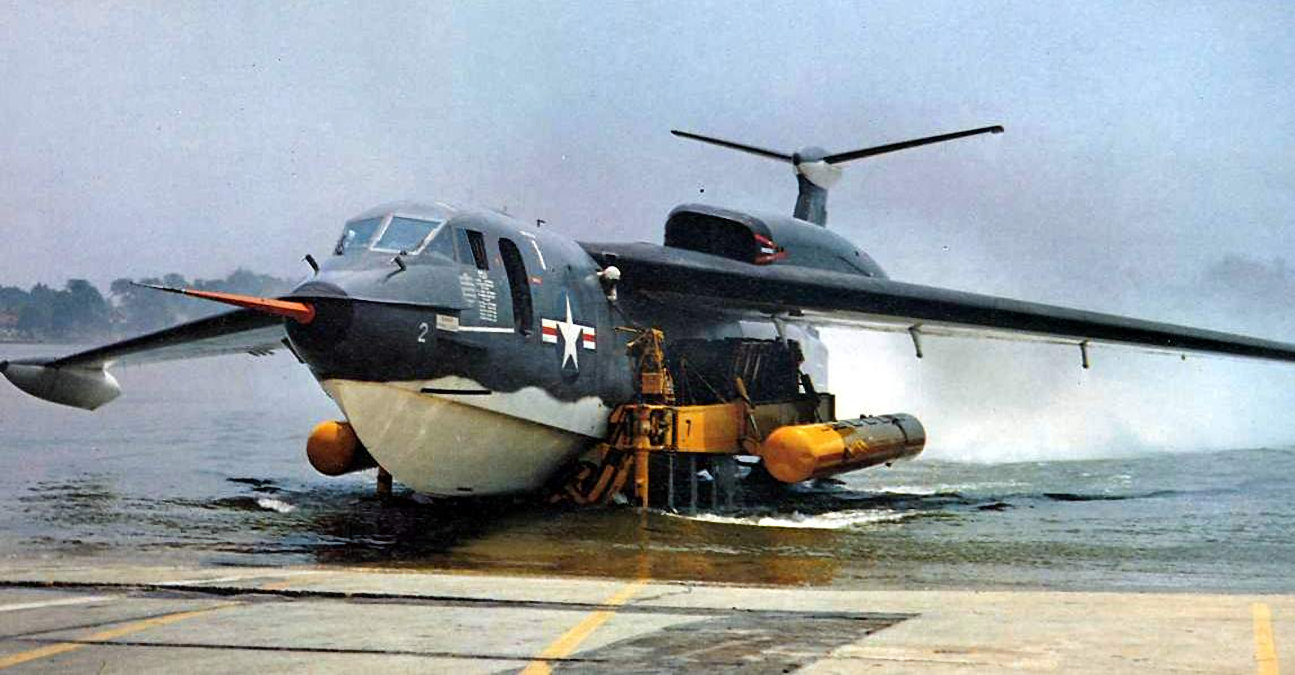✈️ Martin P6M SeaMaster — Review
🧩 Overview
The Martin P6M SeaMaster was a jet-powered flying boat developed in the 1950s by the Glenn L. Martin Company for the U.S. Navy. Designed to perform strategic nuclear bombing missions directly from water, it represented the Navy’s attempt to bypass Air Force control of long-range nuclear delivery and avoid reliance on aircraft carriers.
It was one of the few large, supersonic-capable seaplanes ever built. But despite its futuristic capabilities, the SeaMaster never reached operational deployment — killed by shifting military priorities and rising costs.
⚙️ Specifications
-
First flight: July 14, 1955
-
Status: Canceled in 1959
-
Crew: 4 (pilot, co-pilot, bombardier, flight engineer)
-
Length: 134 ft (41 m)
-
Wingspan: 100 ft (30.5 m)
-
Max takeoff weight: 190,000 lb (86,000 kg)
-
Top speed: ~650 mph (Mach 0.9)
-
Range: ~1,500 miles (2,400 km)
-
Engines: 4 × Allison J71-A-4 turbojets (mounted in pairs above the wing to avoid spray)
🛠 Design & Features
-
Flying boat hull: Could take off and land on open seas using water runways
-
Hydro-skis: Retractable skis provided lift-off from water, replacing traditional floats or landing gear
-
Bomb bay: Carried nuclear bombs or mines inside a watertight rotary bay
-
Mid-wing design: With high-mounted engines to protect from water ingestion
-
Inflight refueling and long loiter time capabilities
💡 Mission Concept
The SeaMaster would operate from seaplane tenders — mobile floating bases — and conduct high-speed, low-level nuclear strike or minelaying missions over Soviet targets. Its ability to take off from remote water locations made it hard to target during a first strike.
It could carry and drop mines or bombs at high speed just above wave height — evading radar and interception.
🧱 Strengths
-
Jet-powered flying boat — rare and impressive even today
-
Could operate without land bases or aircraft carriers
-
Very fast and agile for a seaplane
-
Stealthier basing strategy via ocean mobility
-
Flexible role: could carry nuclear bombs or mines
⚠️ Weaknesses
-
Hydro-ski takeoff system caused major stability issues
-
Difficult to operate in rough sea conditions
-
Maintenance-heavy, especially for jet engines in saltwater environments
-
Expensive, and became redundant as ballistic missile subs and long-range bombers took over the nuclear strike role
-
Suffered two fatal crashes during testing
🚫 Cancellation
By 1959, the Navy canceled the P6M program:
-
ICBMs and Polaris missile submarines made it obsolete
-
Nuclear deterrence shifted to sub-surface platforms
-
Air Force gained dominance over strategic bombing
-
Program costs and development problems piled up
Only a few prototypes were completed — all were scrapped or destroyed.
🏁 Final Verdict
| Category | Rating (★ out of 5) |
|---|---|
| Innovation | ★★★★★ |
| Practicality | ★★☆☆☆ |
| Performance | ★★★★☆ |
| Legacy | ★★★☆☆ |
| Cool Factor | ★★★★★ |
🔚 Final Thoughts
The Martin P6M SeaMaster was a bold experiment — a supersonic flying boat with nuclear teeth. While it never entered service, it remains one of the most innovative designs of the Cold War. Its failure wasn’t due to lack of potential, but rather strategic shifts and technological timing.

Comments are closed